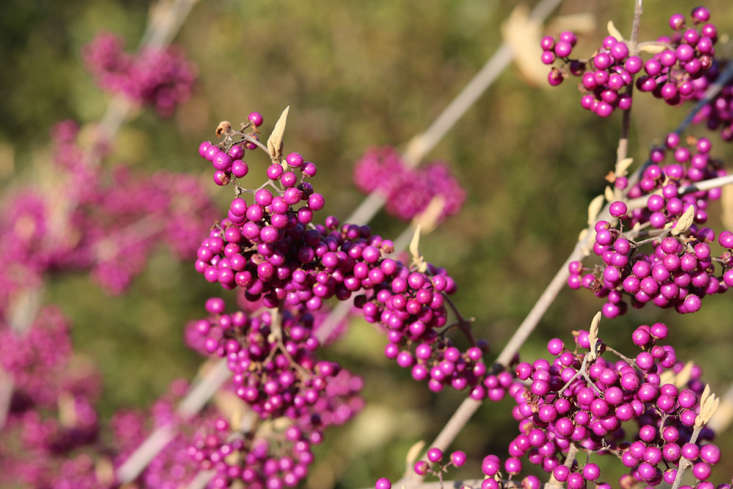Beautyberry, Callicarpa
Beautyberry’s colorful berries are a psychedelic antidote for anyone dreading the dullness of the winter to come. As the year’s days shrink and nights grow long, this shrub which has remained in the anonymous green shadows of the summer garden (after a brief flirtation of small pink flowers) suddenly takes center stage. Stripped of its leaves by the cold, the long branches of beautyberry are now brilliant with electric lilac berries growing in tight clusters.
Read on to learn about the benefits of beautyberry bushes and how to grow this low-maintenance shrub.
Photography by Marie Viljoen, except where noted.




Birds love beautyberry, too, and the shrubs will feed resident and migrating populations in winter.

Cheat Sheet
- For the best fruit display, plant shrubs in full sun (six hours-plus)
- Cross-pollination results in copious fruit production, so plant in groups of two or more for optimal results
- Backlighting is your friend; if possible plant where the setting or rising sun will make the berries glow
- Cut branches keep their berries for a long time; add them to holiday displays and wreaths
- C. americana has tight clusters of fruit with no visible stems. Asian species have small but visible stems.

Keep It Alive
- Plant beautyberry in ordinary soil and water deeply until established
- Beautyberry tolerates clay soil, acid or alkaline pH, and requires only good drainage
- Callicarpa americana is hardy in USDA growing zones 7 to 10, and possibly in zone 6 (mulch well in winter)
Read more growing tips in Beautyberry: A Field Guide to Planting, Care & Design in our curated Garden Design 101 guides to Shrubs. See more:
- Curb Appeal: 11 Ways to Make Your House Look Welcoming in Winter
- Native Plants: 10 Alternatives to Garden Invaders
- Hardscaping 101: Hedges
- Landscaping Ideas: 10 Ways to Save Money During a Garden Remodel
- True Colors: 9 Best Shrubs for Fall Foliage












Have a Question or Comment About This Post?
Join the conversation (0)